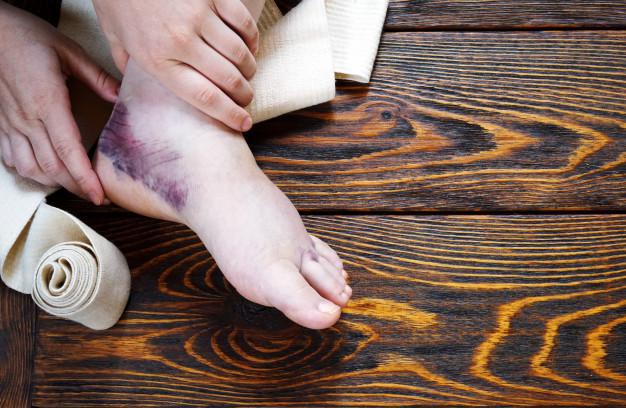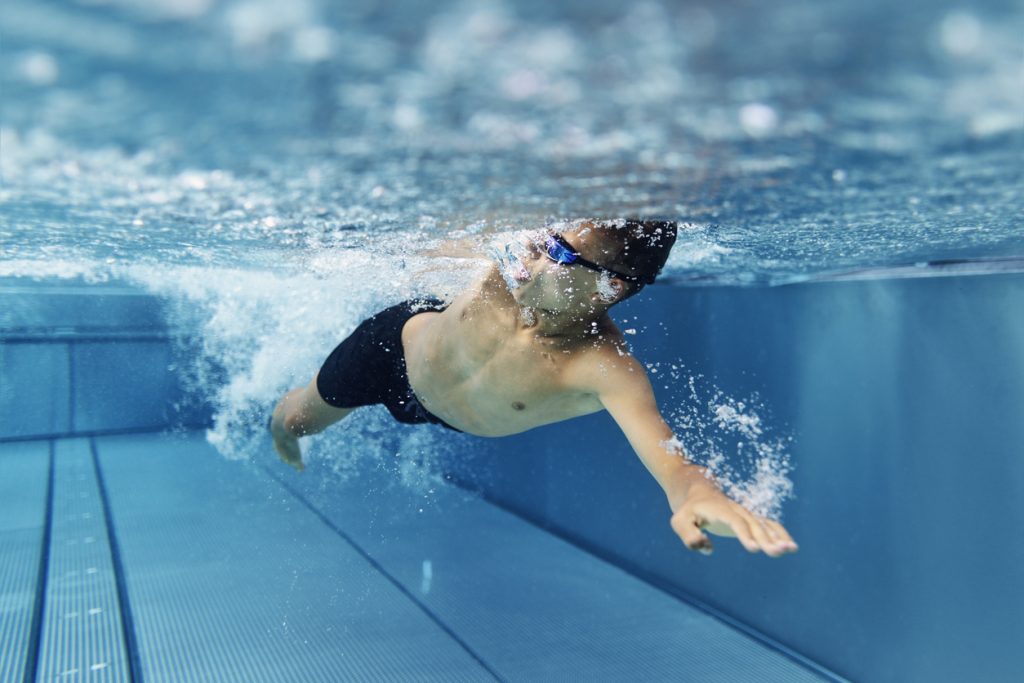Can You Play Sports With a Partial ACL Tear? Find Out Now!
Yes, it is possible to play sports with a partial ACL tear, but it is not advisable as it increases the risk of further damage and can also cause instability in the knee. The ACL (anterior cruciate ligament) is a vital component that stabilizes the knee joint, and in case of a partial tear, the knee can become unstable and prone to giving out during physical activities.
As a result, playing sports can aggravate the injury and lead to severe problems in the future. Thus, it is imperative to seek medical advice from a healthcare professional who can recommend proper treatment options and rehabilitation exercises to help recover from the injury. Taking adequate rest, icing, and avoiding activities that cause pain can help in the healing process.

Credit: www.caringmedical.com
Understanding The Basics Of A Partial Acl Tear
Can you play sports with a partial ACL tear? Find out now!
If you’ve ever experienced a partial ACL tear, you know how painful and limiting it can be. The good news is you can still be active, but it is essential to understand the basics of a partial ACL tear to avoid further injury.
What Is A Partial Acl Tear?
A partial ACL tear is an injury that affects the anterior cruciate ligament (ACL). This ligament is responsible for stabilizing the knee joint and preventing it from sliding forward. A partial tear means that only part of the ACL is damaged, and it often occurs in individuals who participate in high-impact sports like basketball, football, or soccer.
Causes Of A Partial Acl Tear
There are several causes of a partial ACL tear that includes sudden stops or changes in direction, awkward landing from a jump, and direct blows to the knee. It can also result from degeneration of the acl, especially in older individuals.
Symptoms Of A Partial Acl Tear
The symptoms of a partial ACL tear include:
- Pain, especially while changing directions or twisting the knee
- Swelling and tenderness around the knee joint
- Loss of range of motion or sensations of knee instability
- Difficulty in performing daily activities like walking, climbing stairs, or standing for extended periods.
It is essential to seek medical attention if you experience any of these symptoms since a partial acl tear can develop into a complete tear if left untreated.
A partial acl tear can be a debilitating injury that can prevent you from participating in your favorite sport or daily activities. Understanding the basics of a partial acl tear and seeking medical attention is crucial to prevent further injury.
With proper treatment and rehabilitation, you can recover and return to your active lifestyle.
Factors To Consider Before Playing Sports With A Partial Acl Tear
Playing sports is an activity enjoyed by millions of people worldwide and brings several health benefits. However, injuries are inevitable in sports, and one such injury is a partial anterior cruciate ligament (acl) tear. If you have recently suffered from a partial acl tear, you may be wondering whether it is safe to continue playing sports.
In this blog post, we will examine the factors that you need to consider before playing sports with a partial acl tear.
Severity Of The Injury
The severity of a partial ACL tear can vary in terms of the extent of the damage to the ligament. In some cases, a partial ACL tear may cause mild discomfort, while in others, it can cause significant pain, swelling, and instability in the knee joint.
Before deciding whether to play sports with a partial ACL tear, you should consult an orthopedic specialist to determine the extent of the injury. The specialist will assess factors such as pain level, range of motion, and the stability of the knee joint.
Depending on how severe the injury is, the specialist may recommend that you opt for non-surgical treatment or undergo surgery.
Here are some key points to consider before playing sports with a partial acl tear:
- Consult an orthopedic specialist to assess the extent of the injury.
- Take into account the severity of the injury, the stability of the knee joint, and the level of pain.
The Type Of Sport Played
Another factor that you need to consider before playing sports with a partial acl tear is the type of sport you engage in. Some high-impact sports such as soccer, basketball, and football can put a tremendous strain on the knee joint and increase the risk of injury.
In comparison, low-impact sports such as swimming, biking, and yoga are much gentler on the knee joint and may not cause further damage.
Here are some key points to consider before playing sports with a partial acl tear:
- High-impact sports increase the risk of further damage to the knee joint.
- Low-impact sports are much gentler on the knee joint.
- Consider switching to low-impact sports or engaging in less strenuous activities to avoid further damage.
The Player’S Age And Overall Health
Your age and overall health can also play a crucial role in determining whether it is safe to play sports with a partial acl tear. If you are young and in good physical condition, you may recover from the injury much faster than someone who is older or less physically fit.
However, if you are older or have an underlying medical condition that affects your overall health, playing sports with a partial acl tear may not be advisable.
Here are some key points to consider before playing sports with a partial acl tear:
- Younger individuals tend to recover faster from injuries than older individuals.
- Your overall health status will determine how fast you can recover from the injury.
- People with underlying medical conditions that affect their physical fitness should avoid playing sports with a partial acl tear.
Long-Term Implications Of Playing With A Partial Acl Tear
Playing sports with a partial ACL tear may provide a temporary solution to your need to take part in the activity you love. However, it is essential to consider the long-term implications of playing with an injury. A partial ACL tear may worsen over time, limiting your ability to engage in sports or other strenuous activities.
This could significantly impact your quality of life. Furthermore, playing sports with an injury can cause other ailments, such as arthritis, that could be life-long debilitating ailments.
Here are some key points to consider:
- A partial acl tear can worsen over time if left untreated.
- Playing sports with an injury can lead to other debilitating ailments such as arthritis.
- Avoiding sports with a partial acl tear may prevent further complications and injuries in the long run.
Playing sports with a partial acl tear requires careful consideration of several factors that can significantly impact your overall health and well-being. Be sure to consult a medical professional before making any decisions and try adopting lower-impact activities or non-sporting activities.
Rehabilitation And Recovery
Partial ACL tears can be excruciatingly painful and can affect your ability to perform daily activities, let alone play sports. However, with proper rehabilitation and recovery, it is possible to get back on the field. In this section, we’ll explore the best treatment options for a partial ACL tear, rehabilitation exercises to strengthen the knee, and how long it takes to recover from a partial acl tear.
Treatment Options For A Partial Acl Tear
When it comes to treating a partial acl tear, there are several options available. However, the best course of action often depends on the extent of the injury. Here are three popular treatment options to consider:
- Physical therapy: A skilled physical therapist will work with you to develop a customized rehabilitation program to suit your needs and assist you in regaining your pre-injury function.
- Medication: Your doctor may prescribe pain relievers or anti-inflammatory medication to help manage the pain and swelling that often accompany a partial acl tear.
- Surgery: Individuals with a complete tear of the acl may require surgery, but those with a partial acl tear may not. However, in some cases, surgery may be required to stabilize the knee and prevent further damage.
Rehabilitation Exercises To Strengthen The Knee
Rehabilitation exercises are a critical aspect of recovering from a partial acl tear. They serve to regain knee motion and strength as well as support the healing process. Below are a few examples of exercises that are typically included in a rehabilitation program:
- Straight-leg raises: Lie flat on your back with your legs straight and lift the affected leg a few inches off the ground. Repeat with the other leg.
- Calf stretches: Stand arm’s distance from a wall and place your affected leg behind you. Press the heel of your affected leg to the ground to stretch your calf. Hold for a few seconds and repeat with the other leg.
- Quad sets: Lie flat on your back and tighten the quadriceps in your affected leg by pushing your knee to the ground and holding it for a few seconds.
How Long Does It Take To Recover From A Partial Acl Tear?
The recovery from a partial acl tear varies significantly depending on the extent of the injury, the treatment used, and your overall health. However, in general, it can take approximately six to nine months of rehabilitation to regain full strength and mobility.
Your doctor will be able to provide more detailed advice based on your specific situation.
Importance Of Following The Rehabilitation Plan
It’s essential to follow your rehabilitation plan religiously to guarantee a safe and speedy recovery. Skipping one week or even one session can undo the progress you’ve made and lead to complications and delays. If you feel any pain or discomfort during your rehabilitation, be sure to notify your doctor or physical therapist.
Don’t push yourself too hard or too fast; give your body time to heal.
Return To Sport Guidelines
Can you play sports with a partial ACL tear? Find out now!
If you suffer from a partial ACL tear, you might be wondering if it’s safe to continue playing sports. The answer isn’t as straightforward since it depends on the severity of the injury. Fortunately, there are guidelines you can follow to ensure a safer return to sports.

When Is It Safe To Return To Playing Sports After A Partial Acl Tear?
Returning to sports after a partial acl tear should be done with caution and should follow specific guidelines. Here are some terms to consider before returning to sports after a partial acl tear:
- Strengthening: Your goal should be to strengthen the muscles around your knee. The quadriceps, hamstrings, and calf muscles are essential since they can have a significant impact on the knee.
- Pain-free movement: Before returning to playing sports, you should be able to walk, run, jump, and change directions without pain.
- Proper knee support: Knee braces can offer additional support when returning to sports.
- Smart training: Return to sports gradually to avoid re-injury.
Guidelines For Returning To Sports After A Partial Acl Tear
Returning to sports could be concerning after a partial acl tear. Here are some guidelines that will help you to return to sports safely:
- Consult with your orthopedic surgeon or physical therapist before returning to sports.
- Build strength in your legs and develop flexibility in your hips to support your knees.
- Improve your balance to prevent potential re-injury.
- Follow a rehab program before returning to sports.
- Ease back into the activity slowly, with low-impact exercises, and gradually increase intensity.
Preventive Measures To Avoid Re-Injury
To avoid a recurring or new injury, here are some preventive measures that you should take care of:
- Listen to your body, and take breaks when needed during sports activities.
- Always wear proper equipment, e.g., knee pads.
- Follow your rehab program instructions and strength training regularly.
- Warm up before sports activities and cool down accordingly.
- Know the appropriate techniques, and avoid unnecessary risks.
Returning to sports after a partial acl tear is possible through a gradual training program and preventive measures to prevent re-injury. It’s essential to follow rehabilitation programs and guidelines from healthcare providers that will help you return to sports safely and confidently.
Alternative Options For Staying Active With A Partial Acl Tear
Playing sports is a great way to stay active, and healthy, and maintain a positive mindset. However, if you have a partial acl tear, participating in sports activities can be challenging and risky. But don’t worry, there are some alternative options for staying active with a partial acl tear.
In this blog post, we will discuss low-impact exercises and sports activities, tips and tricks to remain active without putting pressure on the knee, and how to accommodate sports and physical activity after a partial acl tear.
Low-Impact Exercises And Sports Activities
Here are some low-impact exercises that you can do to stay active, even if you have a partial acl tear:
- Swimming: Swimming is a great non-weight-bearing exercise that will not put pressure on your knee joint. It’s a low-impact activity that can improve your cardiovascular health, muscle strength, and flexibility.
- Yoga: Yoga is a low-impact exercise that can help improve your flexibility, balance, and strength. A modified yoga practice can be a good way to exercise while avoiding any further knee injury.
- Cycling: Cycling is another low-impact activity that can help strengthen the muscles around your knee joint. You can use a stationary bike or go for a leisurely ride outside to get your heart rate up.
Tips And Tricks To Remain Active Without Putting Pressure On The Knee
Here are some tips and tricks you can use to stay active without putting pressure on your knee joint:
- Modify your activities: You don’t have to give up all your favorite activities just because you have a partial acl tear. Modify your activities and find low-impact alternatives that won’t aggravate your knee.
- Use supportive gear: Investing in a good brace or knee sleeve can provide added support to your knee joint. This can help reduce pain and prevent further injury.
- Cross-train: Incorporating different types of exercise into your routine can help reduce the impact on your knee joint. Mixing up your routine can also prevent boredom and keep you motivated.
How To Accommodate Sports And Physical Activity After A Partial Acl Tear
If you want to remain active in sports after a partial acl tear, here are some things you should consider:
- Consult a physician: It’s important to consult a physician or physical therapist to determine the level of activity that is safe for you. They can help you create a customized exercise plan and provide advice on how to minimize your risk of further injury.
- Wear protective gear: Protective gear, such as knee pads, can help reduce the impact on your knee joint. Make sure you invest in good quality equipment that is specifically designed for your sport.
- Build up gradually: Start slow and gradually increase the intensity and duration of your activity. Pushing yourself too hard too soon can cause further damage to your knee.
A partial acl tear doesn’t have to keep you from participating in sports and staying active. By incorporating low-impact exercises, modifying your activities, and taking necessary precautions, you can continue to pursue your passion for sports and an active lifestyle.
Frequently Asked Questions On Can You Play Sports With A Partial Acl Tear
What Is A Partial Acl Tear?
A partial acl tear usually involves a small amount of damage to the ligament.
What Sports Can You Play With A Partial Acl Tear?
Low-impact sports like swimming, cycling, and yoga can be played with a partial acl tear.
Can A Partial Acl Tear Heal Without Surgery?
A partial acl tear can heal on its own with proper rest, physical therapy, and bracing.
Conclusion
If you have a partial acl tear, playing sports is a decision that must be made after careful consultation with a doctor and physical therapist. While some athletes may be able to continue playing with a partial tear, others may require surgery or complete rest from sports activities.
It is important to listen to your body and avoid activities that cause increased pain or discomfort. Additionally, taking preventative measures such as proper strength training and using proper equipment can help decrease the risk of injury. Ultimately, the decision to continue playing sports with a partial acl tear is a personal one that should be made with consultation from medical professionals and consideration of individual circumstances.
With the appropriate care and attention, athletes may be able to continue playing the sports they love while managing a partial acl tear.



